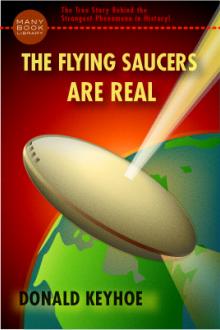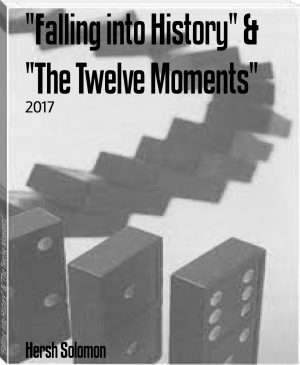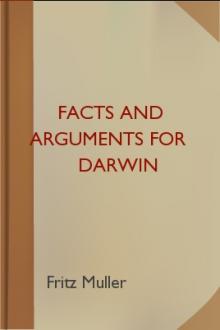The Expression of Emotion in Man and Animals by Charles Darwin (adult books to read TXT) 📕

- Author: Charles Darwin
- Performer: -
Book online «The Expression of Emotion in Man and Animals by Charles Darwin (adult books to read TXT) 📕». Author Charles Darwin
If a dog only snarls at another, the lip is generally retracted on one side alone, namely towards his enemy.
The movements of a dog whilst exhibiting affection towards his master were described (figs. 6 and 8) in our second chapter.
These consist in the head and whole body being lowered and thrown into flexuous movements, with the tail extended and wagged from side to side.
The ears fall down and are drawn somewhat backwards, which causes the eyelids to be elongated, and alters the {illust. caption = FIG. 14.—Head of snarling Dog. From life, by Mr. Wood. whole appearance of the face.
The lips hang loosely, and the hair remains smooth.
All these movements or gestures are explicable, as I believe, from their standing in complete antithesis to those naturally assumed by a savage dog under a directly opposite state of mind.
When a man merely speaks to, or just notices, his dog,we see the last vestige of these movements in a slight wag of the tail, without any other movement of the body, and without even the ears being lowered. Dogs also exhibit their affection by desiring to rub against their masters, and to be rubbed or patted by them.
Gratiolet explains the above gestures of affection in the following manner: and the reader can judge whether the explanation appears satisfactory. Speaking of animals in general, including the dog, he says,[2] “C’est toujours la partie la plus sensible de leurs corps qui recherche les caresses ou les donne.
Lorsque toute la longueur des flancs et du corps est sensible, l’animal serpente et rampe sous les caresses; et ces ondulations se propageant le long des muscles analogues des segments jusqu’aux extremites de la colonne vertebrale, la queue se ploie et s’agite.”
Further on, he adds, that dogs, when feeling affectionate, lower their ears in order to exclude all sounds, so that their whole attention may be concentrated on the caresses of their master!
Dogs have another and striking way of exhibiting their affection, namely, by licking the hands or faces of their masters.
They sometimes lick other dogs, and then it is always their chops.
I have also seen dogs licking cats with whom they were friends.
This habit probably originated in the females carefully licking their puppies—the dearest object of their love—for the sake of cleansing them. They also often give their puppies, after a short absence, a few cursory licks, apparently from affection.
Thus the habit will have become associated with the emotion of love, however it may afterwards be aroused. It is now so firmly inherited or innate, That it is transmitted equally to both sexes.
A female terrier of mine lately had her puppies destroyed, and though at all times a very affectionate creature, I was much struck with the manner in which she then tried to satisfy her instinctive maternal love by expending it on me; and her desire to lick my hands rose to an insatiable passion.
[1] `De la Physionomie,’ 1865, pp. 187, 218.The same principle probably explains why dogs, when feeling affectionate, like rubbing against their masters and being rubbed or patted by them, for from the nursing of their puppies, contact with a beloved object has become firmly associated in their minds with the emotion of love.
The feeling of affection of a dog towards his master is combined with a strong sense of submission, which is akin to fear.
Hence dogs not only lower their bodies and crouch a little as they approach their masters, but sometimes throw themselves on the ground with their bellies upwards. This is a movement as completely opposite as is possible to any show of resistance.
I formerly possessed a large dog who was not at all afraid to fight with other dogs; but a wolf-like shepherd-dog in the neighbourhood, though not ferocious and not so powerful as my dog, had a strange influence over him.
When they met on the road, my dog used to run to meet him, with his tail partly tucked in between his legs and hair not erected; and then be would throw himself on the ground, belly upwards.
By this action he seemed to say more plainly than by words, “Behold, I am your slave.” A pleasurable and excited state of mind, associated with affection, is exhibited by some dogs in a very peculiar manner, namely, by grinning.
This was noticed long ago by Somerville, who says, And with a courtly grin, the fawning bound Salutes thee cow’ring, his wide op’ning nose Upward he curls, and his large sloe-back eyes Melt in soft blandishments, and humble joy.’
The Chase, book i.Sir W. Scott’s famous Scotch greyhound, Maida, had this habit, and it is common with terriers.
I have also seen it in a Spitz and in a sheep-dog. Mr. Riviere, who has particularly attended to this expression, informs me that it is rarely displayed in a perfect manner, but is quite common in a lesser degree. The upper lip during the act of grinning is retracted, as in snarling, so that the canines are exposed, and the ears are drawn backwards; but the general appearance of the animal clearly shows that anger is not felt.
Sir C. Bell[3] remarks “Dogs, in their expression of fondness, have a slight eversion of the lips, and grin and sniff amidst their gambols, in a way that resembles laughter.”
Some persons speak of the grin as a smile, but if it had been really a smile, we should see a similar, though more pronounced, movement of the lips and ears, when dogs utter their bark of joy; but this is not the case, although a bark of joy often follows a grin.
On the other hand, dogs, when playing with their comrades or masters, almost always pretend to bite each other; and they then retract, though not energetically, their lips and ears.
Hence I suspect that there is a tendency in some dogs, whenever they feel lively pleasure combined with affection, to act through habit and association on the same muscles, as in playfully biting each other, or their masters’ hands.
I have described, in the second chapter, the gait and appearance of a dog when cheerful, and the marked antithesis presented by the same animal when dejected and disappointed, with his head, ears, body, tail, and chops drooping, and eyes dull.
Under the expectation of any great pleasure, dogs bound and jump about in an extravagant manner, and bark for joy. The tendency to bark under this state of mind is inherited, or runs in the breed: greyhounds rarely bark, whilst the Spitz-dog barks so incessantly on starting for a walk with his master that he becomes a nuisance.
[1] `The Anatomy of Expression,’ 1844, p. 140.An agony of pain is expressed by dogs in nearly the same way as by many other animals, namely, by howling writhing, and contortions of the whole body.
Attention is shown by the head being raised, with the ears erected, and eyes intently directed towards the object or quarter under observation. If it be a sound and the source is not known, the head is often turned obliquely from side to side in a most significant manner, apparently in order to judge with more exactness from what point the sound proceeds.
But I have seen a dog greatly surprised at a new noise, turning, his head to one side through habit, though he clearly perceived the source of the noise. Dogs, as formerly remarked, when their attention is in any way aroused, whilst watching some object, or attending to some sound, often lift up one paw (fig. 4) and keep it doubled up, as if to make a slow and stealthy approach.
A dog under extreme terror will throw himself down, howl, and void his excretions; but the hair, I believe, does not become erect unless some anger is felt. I have seen a dog much terrified at a band of musicians who were playing loudly outside the house, with every muscle of his body trembling, with his heart palpitating so quickly that the beats could hardly be counted, and panting for breath with widely open mouth, in the same manner as a terrified man does. Yet this dog had not exerted himself; he had only wandered slowly and restlessly about the room, and the day was cold. Even a very slight degree of fear is invariably shown by the tail being tucked in between the legs.
This tucking in of the fail is accompanied by the ears being drawn backwards; but they are not pressed closely to the head,as in snarling, and they are not lowered, as when a dog is pleased or affectionate. When two young dogs chase each other in play, the one that runs away always keeps his tail tucked inwards.
So it is when a dog, in the highest spirits, careers like a mad creature round and round his master in circles, or in figures of eight. He then acts as if another dog were chasing him.
This curious kind of play, which must be familiar to every one who has attended to dogs, is particularly apt to be excited, after the animal has been a little startled or frightened, as by his master suddenly jumping out on him in the dusk.
In this case, as well as when two young dogs are chasing each other in play, it appears as if the one that runs away was afraid of the other catching him by the tail; but as far as I can find out, dogs very rarely catch each other in this manner.
I asked a gentleman, who had kept foxhounds all his life, and be applied to other experienced sportsmen, whether they had ever seen hounds thus seize a fox; but they never had.
It appears that when a dog is chased, or when in danger of being struck behind, or of anything falling on him, in all these cases he wishes to withdraw as quickly as possible his whole hind-quarters, and that from some sympathy or connection between the muscles, the tail is then drawn closely inwards.
A similarly connected movement between the hind-quarters and the tail may be observed in the hyaena. Mr. Bartlett informs me that when two of these animals fight together, they are mutually conscious of the wonderful power of each other’s jaws, and are extremely cautious. They well know that if one of their legs were seized, the bone would instantly be crushed into atoms; hence they approach each other kneeling, with their legs turned as much as possible inwards, and with their whole bodies bowed, so as not to present any salient point; thetail at the same time being closely tucked in between the legs. In this attitude they approach each other sideways, or even partly backwards.
So again with deer, several of the species, when savage and fighting, tuck in their tails. When one horse in a field tries to bite the hind-quarters of another in play, or when a rough boy strikes a donkey from behind, the hind-quarters and the tail are drawn in, though it does not appear as if this were done merely to save the tail from being injured. We have also seen the reverse of these movements; for when an animal trots with high elastic steps, the tail is almost always carried aloft.
As I have said, when a dog is chased and runs away, he keeps his ears directed backwards but still





Comments (0)